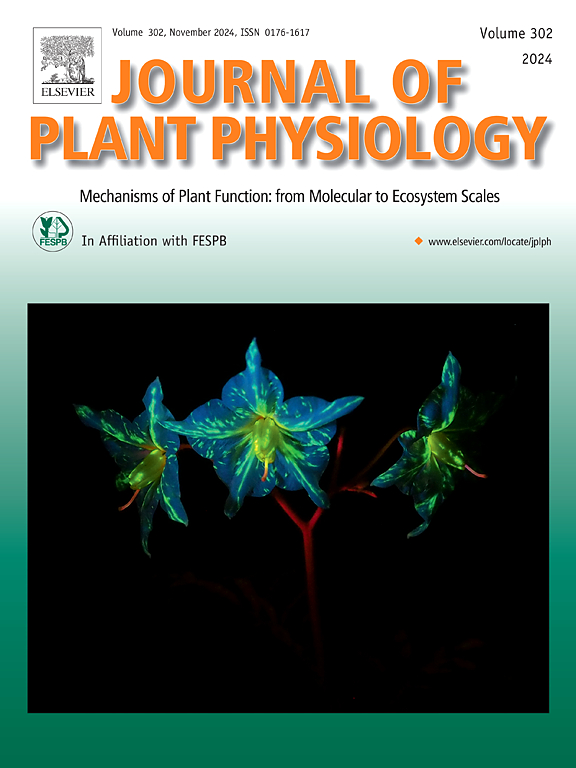Functions of plant hormones and calcium signaling in regulating root hydrotropism
IF 4.1
3区 生物学
Q1 PLANT SCIENCES
引用次数: 0
Abstract
Hydrotropism enables plant roots to grow toward areas with high water availability. This capacity is essential for plant growth and development, particularly when water availability is a limiting factor. The physiological characterization of hydrotropism began approximately 270 years ago, and substantial progress has been made in elucidating its molecular mechanisms over the past two decades. Auxin, cytokinin, abscisic acid, brassinosteroid, and calcium have been reported by various laboratories to regulate root hydrotropism. However, the interrelation among these regulatory components in controlling root hydrotropism remains unknown. This review summarized the regulatory mechanisms of hydrotropism from the perspective of plant hormones and calcium, aiming to elucidate the internal cross-talks between their signaling pathways. Additionally, we addressed central scientific questions, provided insights into future research directions, and highlighted strategies for advancing the application of root hydrotropism in agricultural breeding.
植物激素和钙信号在调节根嗜水性中的作用
嗜水性使植物根系向水分充足的地区生长。这种能力对植物的生长和发育至关重要,特别是当水分供应是一个限制因素时。亲水性的生理特征大约始于270年前,在过去的二十年中,在阐明其分子机制方面取得了实质性进展。生长素、细胞分裂素、脱落酸、油菜素内酯和钙已被多个实验室报道调节根的嗜水性。然而,这些调控成分在控制根系向水性方面的相互关系尚不清楚。本文从植物激素和钙的角度对植物嗜水性的调控机制进行了综述,旨在阐明二者信号通路之间的内部相互作用。此外,我们还提出了核心科学问题,对未来的研究方向提出了见解,并提出了促进根系亲水性在农业育种中的应用的策略。
本文章由计算机程序翻译,如有差异,请以英文原文为准。
求助全文
约1分钟内获得全文
求助全文
来源期刊

Journal of plant physiology
生物-植物科学
CiteScore
7.20
自引率
4.70%
发文量
196
审稿时长
32 days
期刊介绍:
The Journal of Plant Physiology is a broad-spectrum journal that welcomes high-quality submissions in all major areas of plant physiology, including plant biochemistry, functional biotechnology, computational and synthetic plant biology, growth and development, photosynthesis and respiration, transport and translocation, plant-microbe interactions, biotic and abiotic stress. Studies are welcome at all levels of integration ranging from molecules and cells to organisms and their environments and are expected to use state-of-the-art methodologies. Pure gene expression studies are not within the focus of our journal. To be considered for publication, papers must significantly contribute to the mechanistic understanding of physiological processes, and not be merely descriptive, or confirmatory of previous results. We encourage the submission of papers that explore the physiology of non-model as well as accepted model species and those that bridge basic and applied research. For instance, studies on agricultural plants that show new physiological mechanisms to improve agricultural efficiency are welcome. Studies performed under uncontrolled situations (e.g. field conditions) not providing mechanistic insight will not be considered for publication.
The Journal of Plant Physiology publishes several types of articles: Original Research Articles, Reviews, Perspectives Articles, and Short Communications. Reviews and Perspectives will be solicited by the Editors; unsolicited reviews are also welcome but only from authors with a strong track record in the field of the review. Original research papers comprise the majority of published contributions.
 求助内容:
求助内容: 应助结果提醒方式:
应助结果提醒方式:


